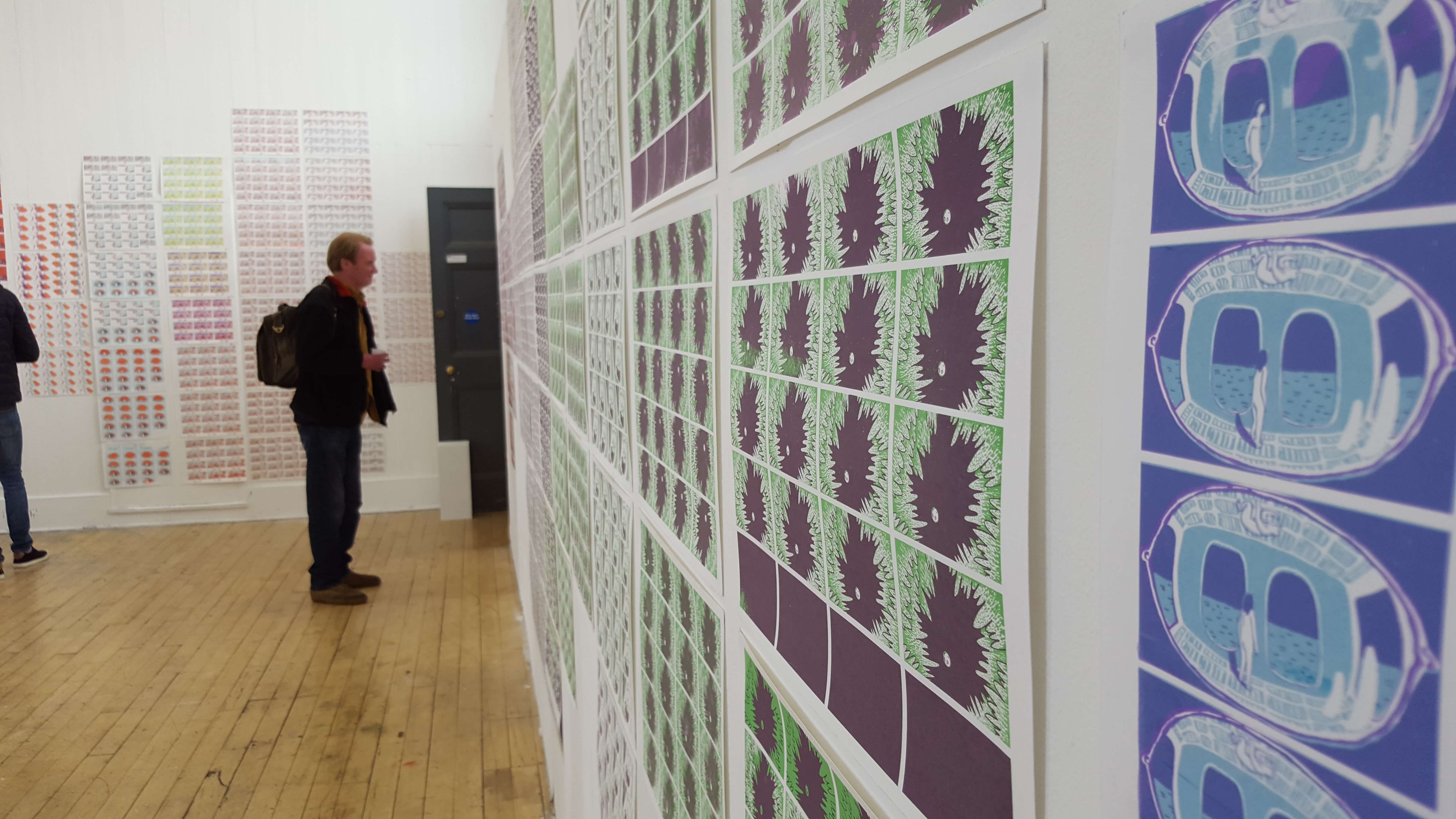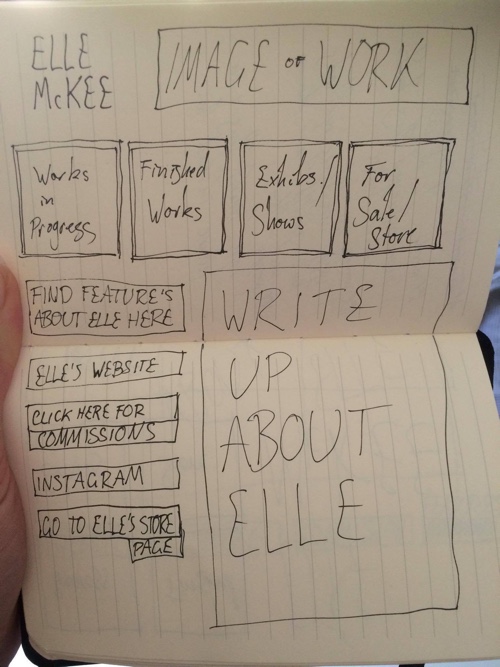I don’t know about you, but as a final year Arts student, I feel like I’ve spent the last few years thinking, ‘This is all great, but how do I actually become an artist? What realistic steps do I take next?’ And in return I’ve received a myriad of vague answers like, ‘It’s not what you know, it’s who you know,’ or ‘You’ve just got to put yourself out there.’ Which are all true, but they’re not exactly a step by step handbook on bringing in the monies in return for creative output. Though luckily, I was recently let in on the ‘secrets’ of freelancing. A real-life step by step guide. Sort of.
So, because Dock is all about lifting up emerging creatives in whatever way we can, and freelancing can be an integral way of promoting and disseminating your work whilst also making an income, I’m going to pass on those secrets to you now. Even if you’re not a Designer or an Artist, this may still be a helpful bit of literature to have up your sleeve. Don’t get me wrong, I am in no way no an expert in the world of freelance, but I can give you some hints in the right direction. So here goes.
The Legal Bits
First of all, decide what kind of business you want to set up, whether that’s as a Sole Trader, a Partnership, or a Limited Company. I’d recommend carrying out a good deal of research in this area before you start signing documents. You want to be absolutely sure you’re making the best choice for your line of work.
Next up is to register with HMRC. This isn’t just the first step in starting up your business, but also a great place to go for a hell of a lot more information on all this scary grown-up stuff. I’d also recommend visiting their site for a better insight into the tax bits. Tax and National Insurance are a must and it’s imperative you have a good understanding of how it works and how you fit into it. These things work differently depending on whether you’re a UK resident or not, so it’s important to find out exactly the kind of tax you should be paying, wherever or whoever you are.
Once you’re all caught up there, the next thing you should know (if you don’t already), is that the financial year begins 6th April. This means you do your tax returns for the financial year at the end of March. Top tip: don’t start a business at the end of March, or you’ll have to do all your tax returns for just a week. Start on 6th April and you’ve given yourself a year to prepare.
To carry out your tax returns legally, you’ve got to start collecting. And I don’t mean stamps or expensive artworks. I mean legal documents, records, pay slips (especially P60s) and receipts from any expenses related to your business. Start the moment you set up your business, and keep collecting them. Even if it’s all stuffed in a shoebox on the top shelf of your closet. Your paper trail is of paramount importance to the success of your business.
Even before it comes to your income being taxed – which won’t start until your annual income hits £11000 – it’s a good idea to put 25% of all your profits aside in a savings account, every time you’re paid for your work. That way you’ll get accustomed to ‘losing’ a certain amount each time, so when it’s eventually taken as tax, the pain of letting it go won’t be so hard to take. Oh, and remember to keep all your records for up to and over six years. This is how far back the tax man can and will look if he suspects anything is wrong. Don’t let him catch you out!
Now, insurance. Again, I’m no expert and can’t predict the exact type you’ll need for your business, but the main thing I can say here is that you’re going to need it. Depending on the kind of work you’ll be carrying out, the nature of your trade and the environment where any of your work is done, you will require one form of insurance or another. This is one you’ll have to research deeply yourself. It’s always worth paying for and never worth scrimping on. Do some digging and again, give HMRC a gander if you’re lost.
Building Your Brand and Reputation
Being creative types, you’ll most likely already know how you want to brand yourself and the kind of promotion that is most appropriate to your field. However, a few reminders can’t hurt.
Get yourself an Elevator Pitch. Don’t know what one is or how to get your hands on it? Have no fear, turns out you can make it yourself at home, for free! An Elevator Pitch is a short and snappy self-promoting speech that describes who you are and what you do, in the time it’d take a lift to get from one floor to another. As we already know, ‘it’s not what you know, it’s who you know,’ and the best way to get to know some important people is face to face. No one will remember you from an email or an online application. Show up, pluck up, and show them who you are, you’re far less likely to fade into the crowd. And if you need to, practice your pitch in the mirror as much as you can, Cool Runnings’ Junior style: “I see pride! I see power!”
Now, you have the options of both self-promotion and/or promotion through a PR company. That’s up to you and whatever’s in your pockets. Obviously social media is a big one, and being mostly millennials we already know how that works, #shamelessselfpromo.
There’s also press releases, guest posting on online media, paying for advertising (you might have to make some profits first!), and client referrals. That last one can be pretty important. Word of mouth works, so make sure to encourage your clients to recommend you, and even consider rewarding them for any referrals they make. Your clients are your allies. Always be on the lookout for new ones, but don’t forget those you already have. If you want their loyalty (and of course, you do), make sure they have a reason to give it to you.
Dealing with Customers
A lot of the time your first contact with a new client will be on the phone, through email or in person. All of which are very easy to turn into informal encounters. Don’t do it, there’s a difference between being friendly and amiable, and being downright unprofessional. Be as profesh as possible from the very beginning, and don’t be afraid to do so. Your client will be more inclined to trust you and take you seriously.
When striking a deal or taking on a commission from a client, get full affirmation that the person you’re speaking to has the authority to be offering you this work. Sounds silly, but a lot of the time they really won’t. And then you’ve got no job and have wasted your own time.
It’s also important to remember that although a verbal contract is technically legally binding, it’s rare that you’ll have hard evidence to prove it ever took place – unless you wear a wire 24/7. So do everything you can to put any discussions, quotes and agreements you make in writing, whether digital or hand written.
Here’s a helpful checklist of all the questions you should have the answers to before you agree to take on a job:
What is it that you’re agreeing to?
When is the deadline?
What form/format should the work be delivered to the client in?
What rights are you licencing?
Have you dealt with all and any insurance issues that may arise?
How many hours/days will the work take?
What are the expenses?
When will you be paid?
Should you invoice, to who and when?
Do you need to quote a Purchase Order Number or other reference in order to get paid?
Sounds like a lot, but better safe than sobbing into your 2 for 1 super noodles.
It also turns out that a lot of clients might be pretty bad at getting their payment to you. Make sure to insist, in writing, that payment will be given on delivery of the work, or any other time you deep appropriate, depending on the nature of the work to be carried out. Truth hurts, but some clients may just out right not pay you. And seeing as you’re a self-employed start-up creative, it’s unlikely you’ll have the means to take them on in court. Again, sounds ridiculous, but for some reason this is a point that needs highlighting – DO NOT accept any work from a client that has neglected to pay you in the past. Don’t get your hopes up that this time they might pay you, and on time. They won’t. If they get away with it once, they’ll do it again. It’s a waste of your time and efforts. Don’t be afraid to be cutthroat. It’s your business and you’re the boss.
And remember to keep all payments to bank transactions. Cash is hard to keep a paper trail for, and paper trails are your friend.
In terms of charging for your time, as an emerging Artist or Designer working in freelance, you should be charging around £26per hour for your time. Charge for 100% of the time you spend on this work, but remember running your business is just as much work as producing your product. 30% of your time should be dedicated to your actual creative work, and the other 60% to running and promoting your business. You can charge for any of this time spent on a job for a client. Just make sure your quotes for how long this may be, and how much it’ll cost, are as accurate as possible. Don’t stretch yourself, but don’t take the piss either. Stay professional.
Licencing
This is a tricky one. Although copyright is automatic from the moment you create something, you may want to look into the rules of intellectual property, and how you can protect your work from being stolen or plagiarised.
Want to hear a horror story? The student that designed the Nike tick (you may have seen it around) got $40 for it. In total. In her entire life. Painful, huh? This was allowed to happen because the designer didn’t understand licensing, and probably wasn’t all that read up on the rules of intellectual property. There’s a lot of blurred lines in this area, so if you’re not totally sure about how it all works, I’d so some good, thorough brushing up on it if I were you. The best you can do to keep yourself safe in the meantime is keep a digital record of any work you produce. You can then at least prove you’re the creator.
Finally, if you’re still feeling a little muddled, or I’ve filled your head with too much ‘adulting’ in one go, some other places you can look for more information are:
Creative Skillset Freelance Toolkit
Startups.co.uk
Cultural Enterprise Office [Scotland]
Related Articles

'Illusions' by Nica Harrison - May 2016
exhibition
Nica Harrison is currently in Gdansk working as one of the 100+ artists pulled together to create the world's first fully painted, animated feature film Loving Vincent. We can't wait to see it! Below is an archived review of her solo…

The Making of Dock: Code and Art
dockblog
TLDR; We have finally launched Dock and would love your feedback on the site: dockarts.com/feedback, thank you! Humble beginnings So this is a little different to the posts that…

Interview with Elle Mckee
interview
So what have you been working on recently? Well, after I finished my degree work for 3rd year, I was looking for competitions and briefs that are out in the real world. I looked into Glastonbury Festival’s ‘Don’t Pee’ Campaign